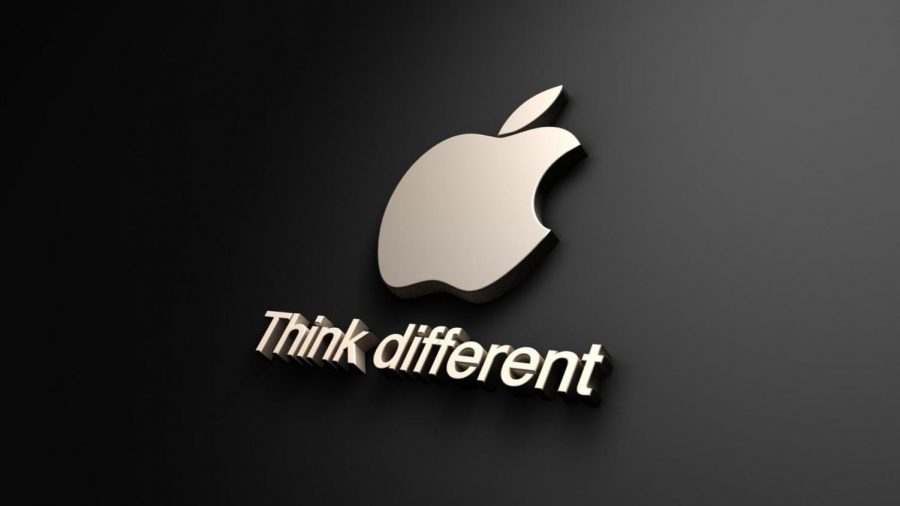Apple: From Daring Innovation to Elitist Stagnation
January 31, 2020
If you’re reading this article, chances are you more than likely own a product from the tech giant, Apple.
From personal computers, to laptops, phones, tablets, watches and an abundance of accessories, software and online services, Apple’s dominance in the U.S. consumer-electronics’ industry is undeniable. With this success, however, I believe the company has morally deteriorated into something cynical.
Over the past several years, Apple has profited off of their rising symbol of social status, no longer creating innovative products or pushing the bounds of technological innovation, like when it first dominated in the early 2000s.
Since its humble beginnings in 1976, Apple Inc., formerly Apple Computer, has been known for its groundbreaking technology and accessible product design. The Macintosh was the first commercially successful personal computer to utilize the innovations of a mouse and graphical user interface, making it very easy to understand and use compared to other PCs at the time.
Then, in the early 2000s, the emphasis on design, ease of use, and affordability of the music that Apple put into creating the iPod portable media player, led the company to once again dominate with this new technology.
This success led to future innovations in cell phones, with a focus on app-based interfaces, resulting in the launch of the iPhone in 2007 and the iPad in 2010, two incredibly successful mainstays for Apple. And although all of these products were expensive, their incorporation of one man’s vision of form, function, and technology allowed them to thrive.
That man was the late Steve Jobs, who co-founded Apple and worked as CEO from 1997-2009, passing away with Pancreatic Cancer two years afterwards. All of those products I just listed were invented by Jobs, and the company likely wouldn’t exist today without him.
Since his death in 2011, I don’t believe Apple has created anything even close to as groundbreaking as the inventions of Jobs. Instead, the company has mostly reiterated what came before, while continuing to raise prices. Since 2011, Apple has had 13 new releases in their iPhone line, on average releasing more than one new model per year.
With each new generation though, few improvements have been implemented beyond the standard battery improvement, slimmer design, and camera upgrades. And while these refinements have improved user-experience, they are not enough to warrant such expensive prices.
Unlike most new technology that sees reductions in pricing when mass-produced, including the television, VCR’s, personal computers and even Ford’s assembly-line cars, which innovated and expanded car ownership for American’s in the 20th century, Apple has benefitted from cheap labor of foreign manufacturing, but maintained a high-profit margin for its stockholders, and has not passed any savings on to their consumers.
This can be largely attributed to the cult of Apple products for consumers and its’ fierce brand loyalty from its customers. This loyalty is not lost on the younger generation, with kids as young as elementary school given iPhones, and babies and toddlers allowed to play with expensive iPads throughout America.
As a former Android user myself, I can attest to being insulted by countless middle schoolers for using a “knockoff” phone. With generation Z being the first generation immersed in this technology, constantly connected to their phones, the status of the coveted iPhones remains high.
While average cell phone prices in less developed areas, including Africa and South America, average at around $250 or less, American’s pay almost double that, or $475 for the average smartphone. For the moment, Apple has the market and the consumer hooked with no need to innovate until an unforeseeable shift in consumer attitudes, trends and/or perhaps a desire to be less connected occurs.
The insane pricing of Apple’s products has even become the topic of memes, with people comparing the $999 cost of the Mac Pro Stand for its newest computer display to various other things one could purchase with the amount of money. A logo on an Apple product has gone from a symbol of cutting edge technology to a literal joke.
During the third quarter of the 1984 Super Bowl XVIII, Apple ran a commercial titled “1984” that introduced the world to its Macintosh. The full 60-second length ad takes place in the fictional setting of George Orwell’s popular novel of the same title. The commercial metaphorically smashed the idea of the PC to consumers, reining in the beginning of Apple’s age of innovation with technology.
Today it seems Apple has become the very villain they warned the American public of with this ad. They have transformed into the Big Brother of consumer electronics, producing carbon copy products and take advantage of their customers.
Apple’s products are still well-made at the very least, and if you still want to stick with the brand, that’s perfectly fine, just don’t rub it in the face of those who choose a more financially-informed option.

